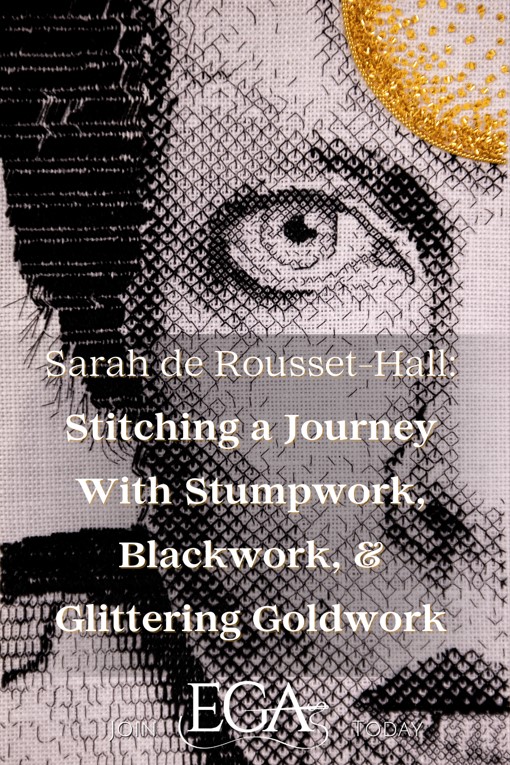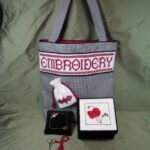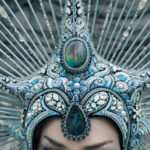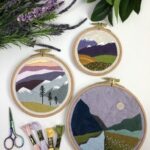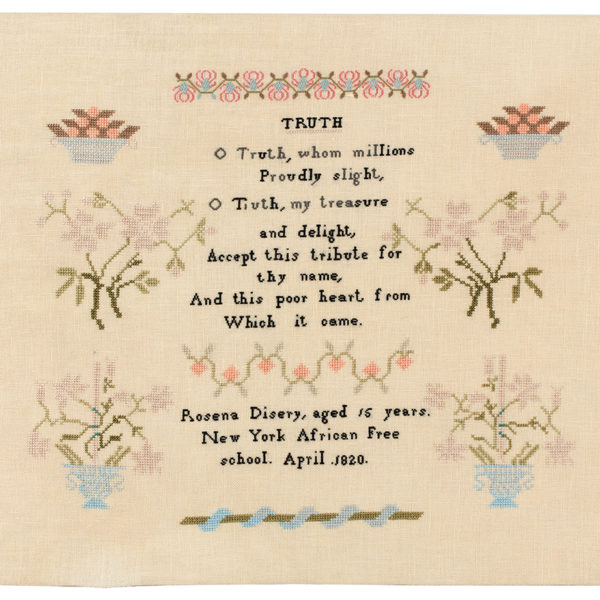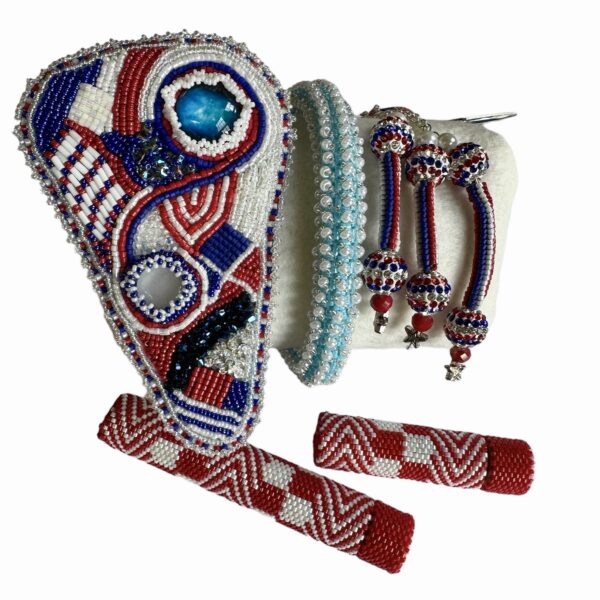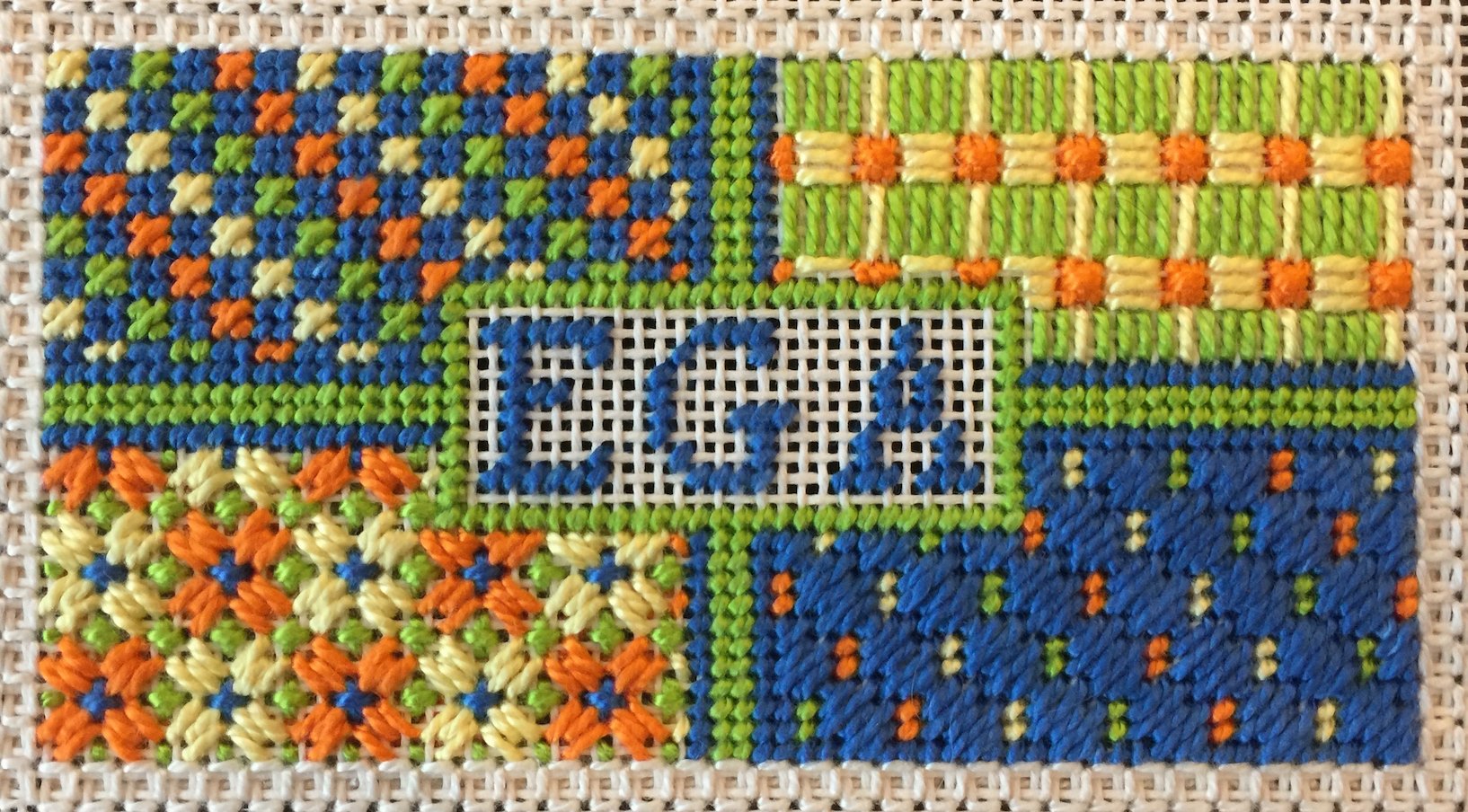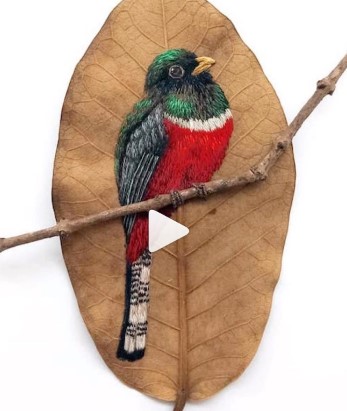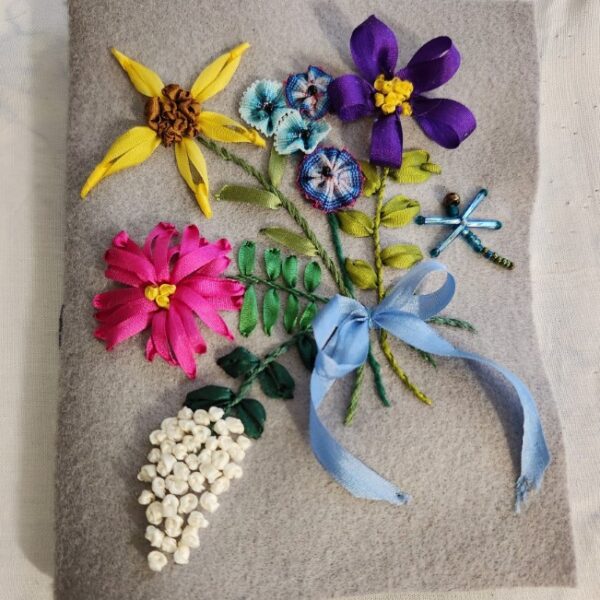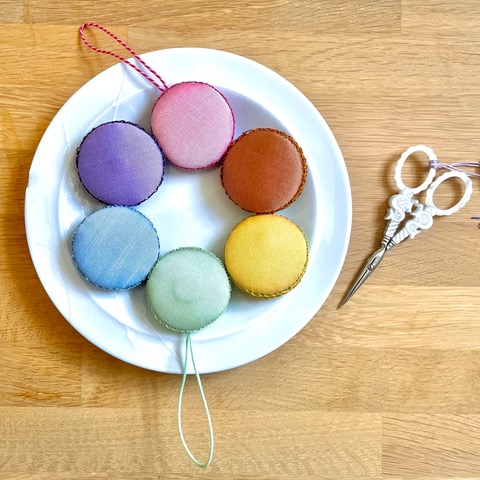
Sarah de Rousset-Hall came to needlework and fiber as so many of us have—as a young person in want of a weekend activity, her hands and mind calling for stimulating occupation. Her embroidery journey since those early experiences has varied, shifting trajectory from an after-hours hobby to a full-blown career. Sarah has evolved into a multi-hyphenate talent with experience in various embroidery techniques. We were thrilled to sit down with Sarah and learn more about her experiences ahead of her Stumpwork embroidery course, Marvelous Macarons, now open for registration through October 4, 2024.
When did you first start embroidering?
When I was a young teenager we moved from the UK to Canada for a few years and during the very cold winter months, my mother needed to find something for my sister and me to do at the weekends, so every Friday she’d pick us up from the school bus and drive us to the local Michael’s to pick up a craft. I was fascinated by the stranded cartoon skeins, and after learning to make friendship bracelets and hair wraps I moved on to embroidery.
I picked up cross stitch again in my early 20s to keep me occupied during travel for work. Then at 30 I was diagnosed with breast cancer, and cross-stitching is what kept me sane during the many months I had to take off work. Once I got better, I started to look outside of cross stitch, and ended up going along to a Royal School of Needlework day class, run by the lovely Jen Goodwin. From there on, I was hooked!
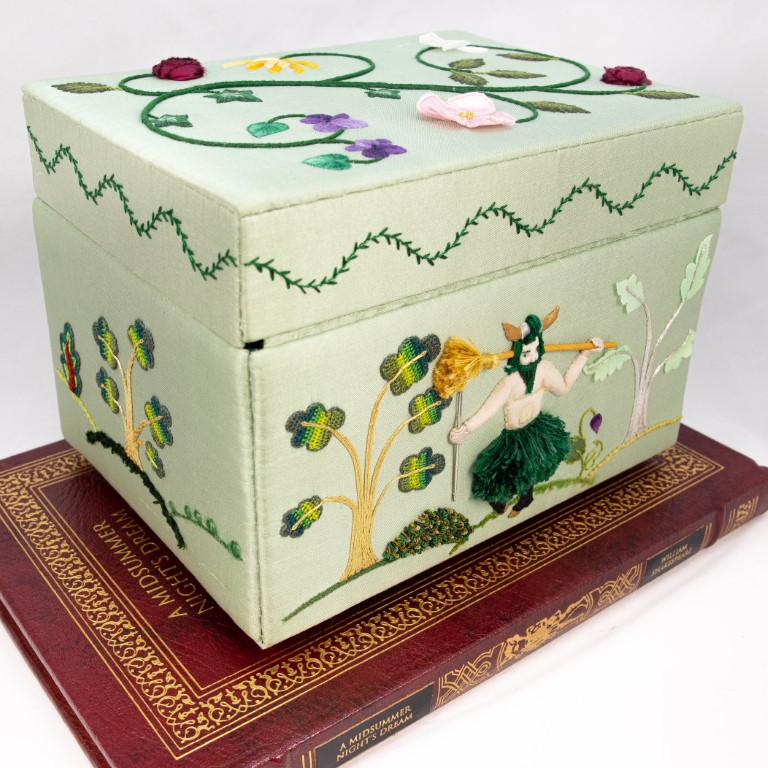
You graduated from the Royal School of Needlework’s Future Tutor Programme in 2020, having studied Goldwork, Blackwork, Whitework, Crewelwork, Silk Shading, Canvaswork, Applique, Stumpwork and Box Making. Do you have a favorite technique?
I really do enjoy all of them. One of the things I love about my work is that I get to do and teach a little bit of everything. But I do have a really big soft spot for Goldwork, I just keep getting drawn into the sparkles.
What drove your decision to become a professional embroidery teacher?
After my cancer treatment, I threw myself back into work, and to be honest, burnt myself out. Having had such a life-changing experience I decided I should give up corporate life and do something creative that I loved instead, and embroidery was the obvious choice. My sister and I went to another RSN class together, which is where I heard about their Future Tutor Programme, and it seemed like the perfect fit. It wasn’t the easiest decision – I would have to study full-time for 3 years, and I had a mortgage to pay. But after discussing it with my very supportive husband, we realized we could make it work. Honestly, it’s the best decision I ever made!
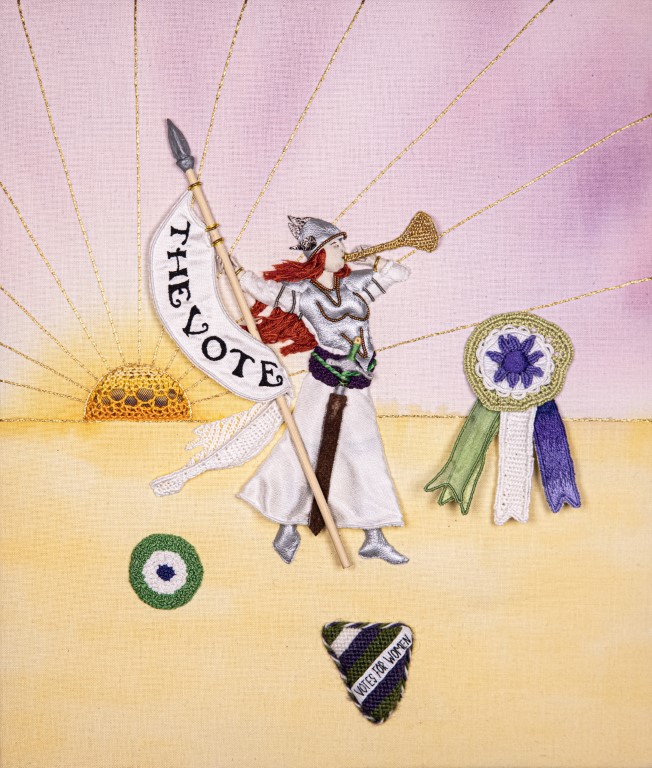
You were part of the Royal School of Needlework Embroidery Studio team, which crafted items for the Coronation of Their Majesties King Charles III and Queen Camilla, including The Queen’s Robe of Estate, the Anointing Screen, and the Stole Royal. Can you talk a little about what that experience was like?
It was such an amazing honor to work on the Coronation projects for the RSN, something I’m very grateful to have had the opportunity to do. I got to work on some beautiful pieces that are part of history. I joined the stitching team in January and was at Hampton Court usually for a couple of days each week, whilst carrying on my regular teaching and not being able to say anything to anyone as everything was being worked in secret.
I feel like I had the easiest job however, I just had to turn up and stitch! The real heroes were Anne Butcher and Gemma Murray, who run the RSN studio, and (as well as stitching) had to organize all the work and make sure everything happened on time and to the right quality as well as remaining a secret.
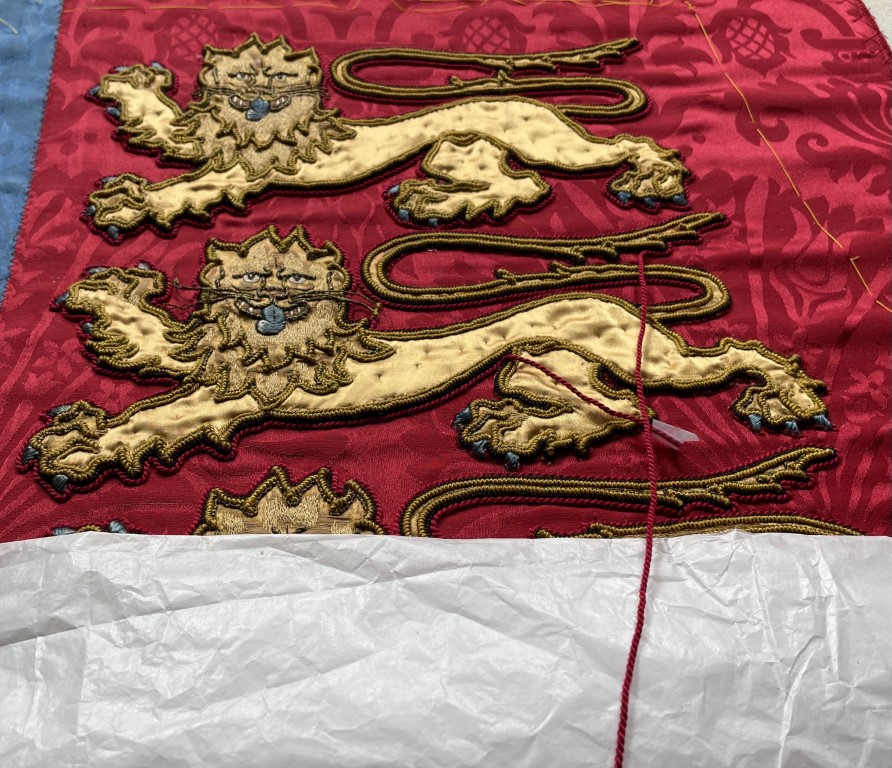
I also got to work for the College of Arms, to help restore three of their tabards, which had been damaged over time and were needed for the Coronation. They also come out for events like the State Opening of Parliament, so I get to see them on the news from time to time.
Along with about 20 others from the RSN, I was also lucky enough to be at the Coronation on the day – not in the Abbey, but in the seating in front of Buckingham Palace along with representatives of other organizations involved in the work for the Coronation, charities, armed forces, and the NHS. I took my big camera and got a great photo of the balcony.
You embroidered a Blackwork portrait of David Bowie, which was on display at the exhibition celebrating the 150th anniversary of the RSN at the Fashion and Textile Museum in London in 2022. It’s such a gorgeous, striking piece! Can you talk a little bit about how that portrait came to be?
My first David Bowie piece was worked as part of my training, and was my first piece of Blackwork. I was really worried about learning the technique and knew that it had to be an image I really loved. Around the time that I was looking for images to use for my Blackwork training, photographer Masayoshi Sukita released previously unpublished photographs of David Bowie. I read an article about it, and one of the pictures, “Loves to be Loved,” just jumped out at me. I showed it to my tutor, Kate Barlow, and she really encouraged me to work the piece, even though I didn’t think I’d be able to do it justice.
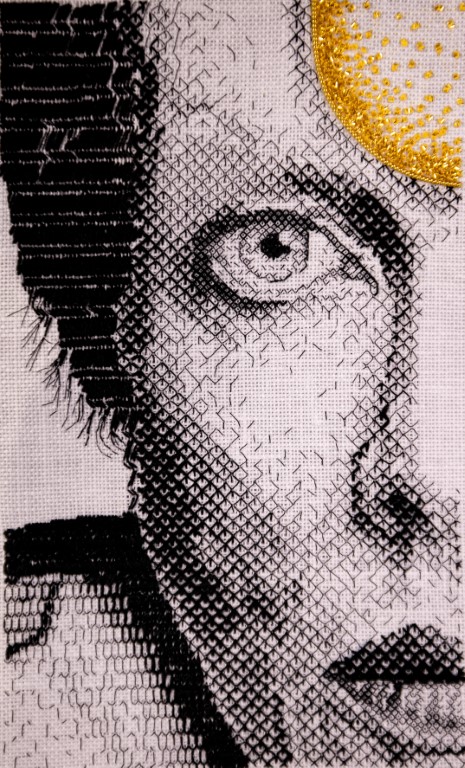
It felt like it came together by magic. I started stitching and David Bowie somehow appeared. So after I graduated, I decided to tackle it again! For the 2022 Broderer’s exhibition I made a new version of David – Starman, cropping the image down and adding some Goldwork. I was able to prove to myself that it wasn’t just a fluke. I adore my original David—it was the piece that taught me I was capable as an artist as well as a stitcher—but Starman is the more beautiful piece.

Where do you find inspiration?
Sometimes I’ll wander around a museum or art gallery and have a fabulous time looking at everything, but come out with nothing for an idea, and sometimes I’ll leave with more ideas than I know what to do with. Then I’ll be in my studio and suddenly have a great idea for a class or a piece with little idea of where it came from.
For classes, I often look for interesting patterns or go delving into the RSN archive for a historical piece, and sometimes I’m asked to make a class around a specific exhibition or theme, which is helpful! One of the new classes I’m working on was inspired by the hood ornament of a car I saw at a classic car rally—so inspiration really can strike anywhere!
For my art pieces, I have to really love an idea to work on it—otherwise, it’ll fall to the bottom of my list of things to do. I have to really connect with the idea to be able to work for possibly many months on a piece with no guarantee it will work, or that it will sell. You have to be willing to take the risk!
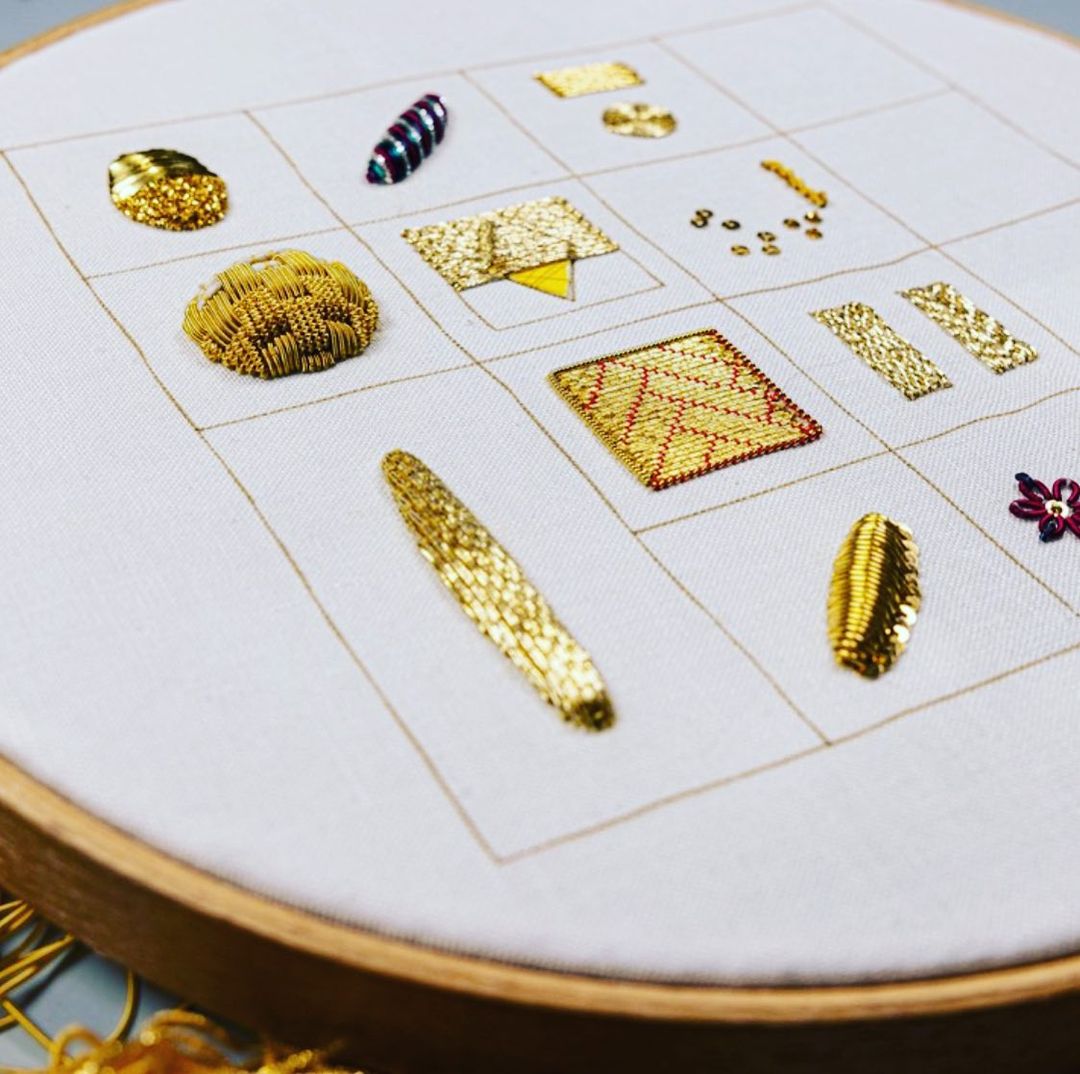
What does your design process look like?
I like to live with my ideas in my head for a while before formally starting my design work. Then if it keeps coming back to me I’ll start by sketching in a physical sketchbook, just to get the initial idea down on paper. Once I’m happy with the rough design, I start on a stitch plan, and start some small samples. Then I’ll transfer it onto the computer. I use Adobe Illustrator to convert my sketch into something a little neater, so that I can print the full design onto fabric. I usually start with a sample on muslin to check the sizing and layout. Finally, I’ll print onto the fancy fabric and start work. If it’s a design for a class I’ll take notes in my sketchbook whilst I stitch so that I can refer back when I come to writing up the instructions.
Do you have a favorite design that really showcases your aesthetic?
My London Lights piece. This was worked for The Worshipful Company of Broderers Exhibition held in London in 2022. It was bought by Diana Springall for her collection. It’s worked in Goldwork on black cotton velvet and uses Gilt, Silver, and Copper metal threads. I was inspired by a dot painting I saw in a gallery on a trip to Japan and thought I needed to do something similar using Goldwork. Then on the flight home we flew in over London at night and the final idea was born. I’ve always loved maps, so it was just the perfect design for me!
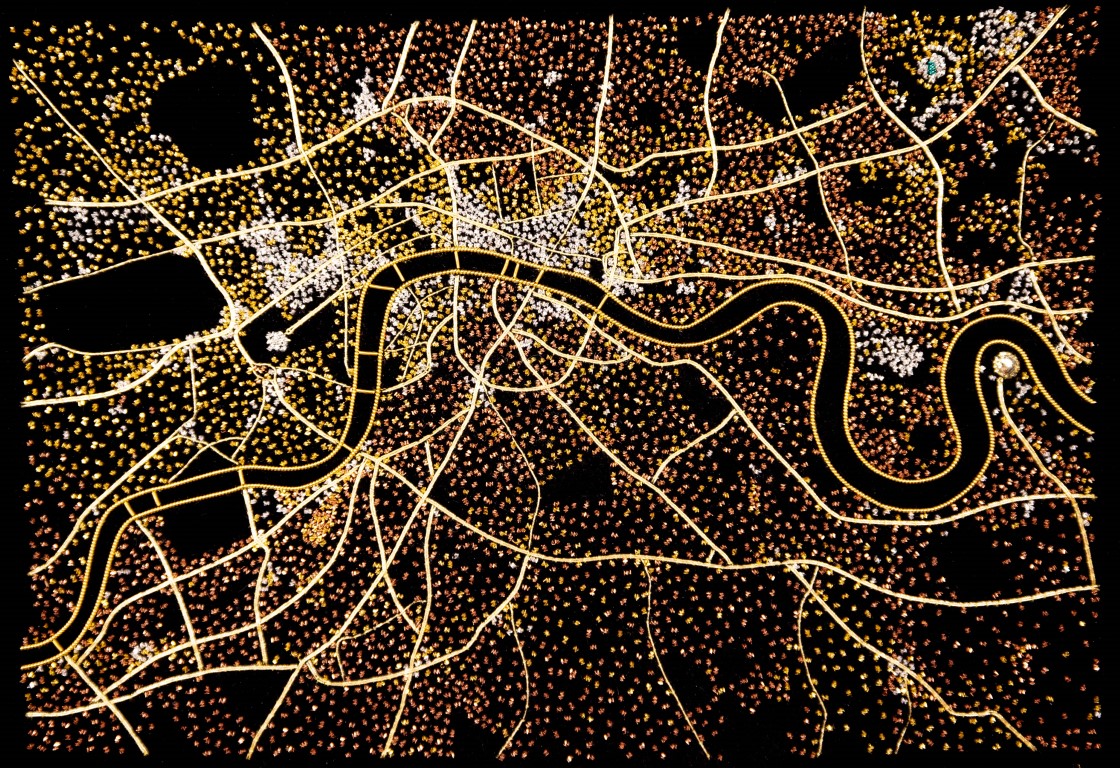
Do you have any favorite tools you can’t live without?
My Kai Blade Fine Embroidery Scissors. They are the best scissors I have ever found for both regular stitching and for Goldwork, and I usually have at least two pairs (one for Gold) in my embroidery kit. They are super sharp, have lovely thin blades, and are relatively inexpensive.
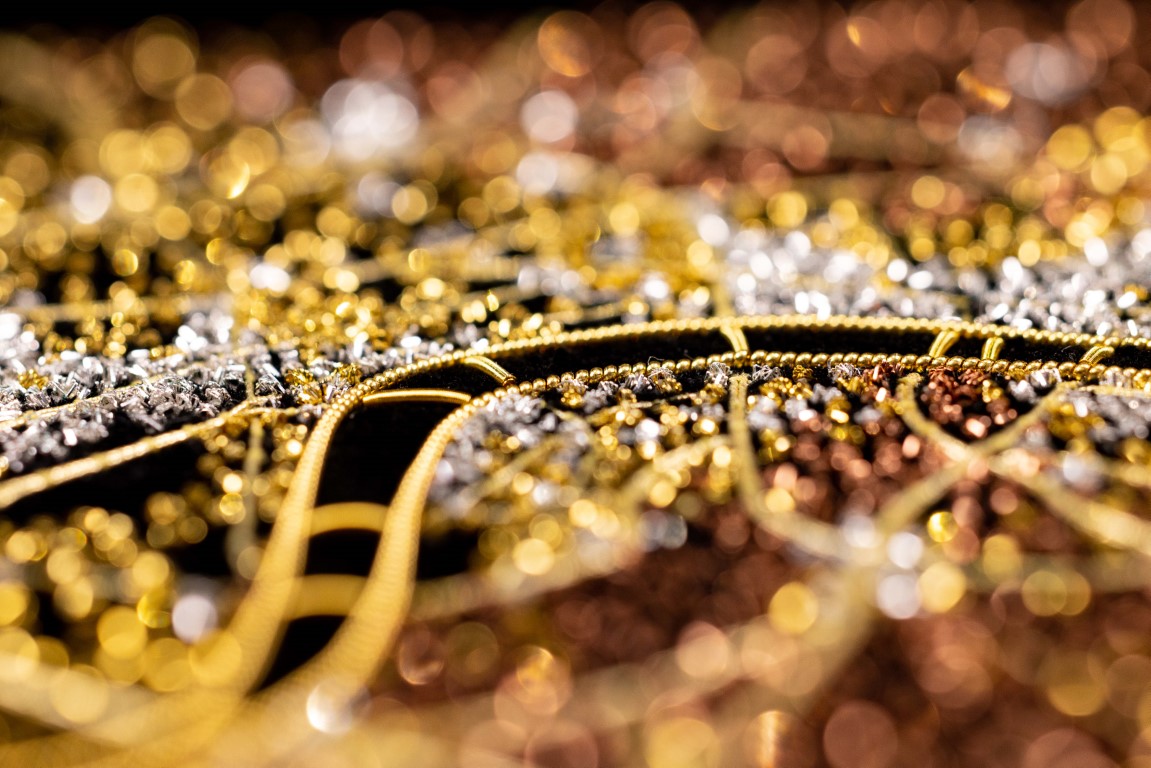
Do you have a daily/weekly/monthly practice that you’d recommend to other embroiderers interested in honing their craft?
Stitch as often as you can – embroidery is all about muscle memory, particularly with needle placement. If you keep stitching, stitching anything, it gets easier to bring your needle up exactly where you want it to be, which is the key to accuracy and speed.
What crafting or color trends (if any) are you drawn to right now? Are you working on anything exciting?
I’m always drawn back to Goldwork! At the moment I’m working on a couple of pieces for an exhibition next year – both in Goldwork. The first is a combination of Blackwork and Or Nue, which is a bit experimental, but I’m also working on a new Goldwork map – this one is of New York and will be called The City That Never Sleeps, which I’m really enjoying working on.
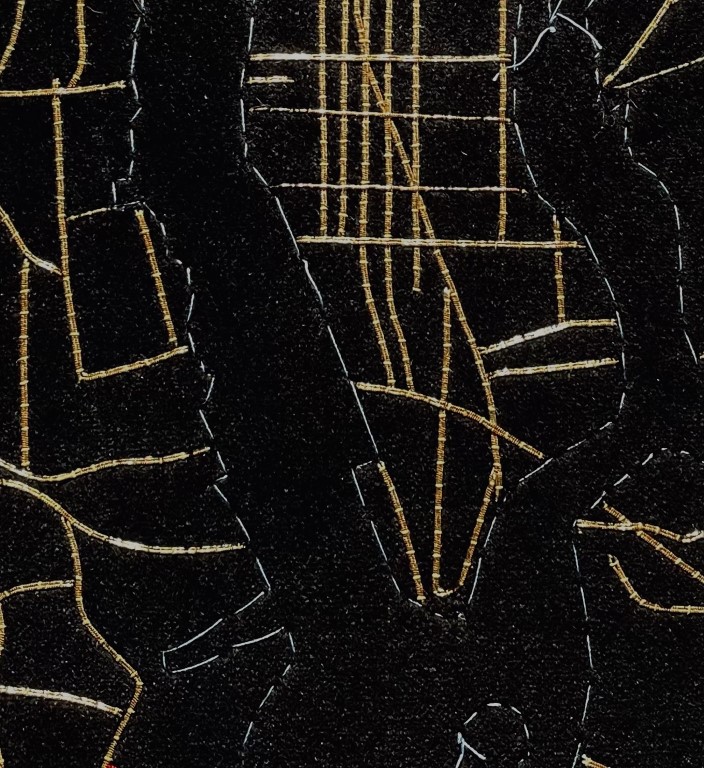
I’m also developing a couple of new classes, one in Fine Whitework and one in Both Sides Alike to add some more advanced pieces to my range of classes.
What do you hope embroiderers take from Marvelous Macarons?
The macarons are a really fun, and pretty quick project, and a great introduction to some Stumpwork/Raised work techniques such as Needlelace.
It’s a great project that you can pick up in small chunks, perfect for the run-up to Christmas, and an excellent decoration to add to your tree. My sister-in-law now has two sets of six that she’s made—one set for her daughter to play with and another set to hang on the Christmas tree.
For folks that completed my Parisian Patisserie box class last year, a set of 6 fits perfectly into that box so you can complete the set!
And for the bakers out there, I’ll also be including my real macaron recipe in the class notes, in case you get hungry whilst making the silk versions!
